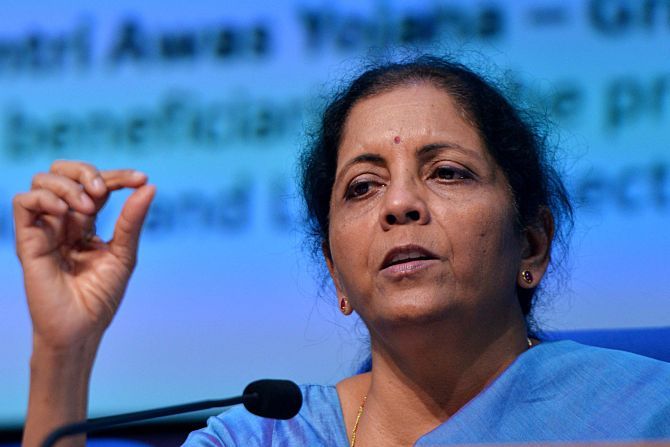'Though I welcome the reduction of tax rates for corporates, I wonder why the benefits have been restricted to corporates and not to other business entities such as limited liability partnerships and partnership firms. This needs consideration', says Dinesh Kanabar.

When the finance minister delivered a shot in the arm to the economy, she considerably reduced the rates of tax far beyond the wildest expectations of corporate India.
Unwittingly, she has created a complex rate structure where different rates of tax apply to corporates and non-corporates.
Within corporates, we have different rates for companies availing tax incentives (within that, different rates for different turnovers), for companies not availing tax incentives that are not into manufacturing and, finally, for newly set up companies engaged in manufacturing!
We have separate tax rates for capital gains - long-term and short-term - and for listed and unlisted shares.
Finally, we have a dividend distribution tax and a reduced minimum alternate tax.
Indeed, a plethora to deal with.
While this complex rate structure seems a bit daunting, the hugely positive impact of the proposals deserves to be absolutely commended.
At a point of time when the prime minister undertakes his visit to the US and tries to woo MNCs there to move their manufacturing base from China to India, a 17.16 per cent rate of tax is a major positive.
Should we have restricted the lower rate of tax only to the manufacturing sector, or have also extended it to the service sector?
Is software development ‘manufacture’?
These are interesting questions for a future date.
In reducing the rate of tax for companies who opt not to have tax incentives, the Ordinance has two issues that need to be recognised.
If the companies have brought forward losses and opt to move out of the incentive regime, then the losses that are attributable to incentives that have been availed of in the past years, would lapse.
The other question is with regard to the status of the brought-forward MAT credits.
From a plain reading of the provisions of the Act, the unavailed MAT credits will lapse.
As such, reaching a conclusion as to whether a corporate should continue to avail tax incentives or move over to the new rate regime requires a lot of thought and working upon.
The fact that Corporate India was pushing for a 25 per cent rate of tax (without incentives) and expected a surcharge to top it up, whereas what was proposed was an all-inclusive 25.17 per cent tax rate, shows that the finance minister has exceeded all expectations.
The reduction in the rate of MAT to 15 per cent from 18.5 per cent for companies that want to continue to avail of tax exemptions, is a welcome move.
What’s more important is the option given to them, to get into the 25.17 per cent tax regime, once their incentives are exhausted.
Making the buyback prospective to those who proposed a buyback after July 5, 2019, is indeed welcome and shows that the government has heeded to representations.
Though I welcome the reduction of tax rates for corporates, I wonder why the benefits have been restricted to corporates and not to other business entities such as LLPs (limited liability partnerships) and partnership firms. This needs consideration.
Finally, we have a hole of Rs 1.45 trillion as a result of the incentives announced.
This may seem a big one. However, the boost it gives to sentiment, and ultimately to demand, production, and consumption will more than make up for this hole and put us on a whole new trajectory of growth.
Dinesh Kanabar is an entrepreneur and international tax expert. He is founder and CEO of Dhruva Advisors, one of the largest tax and regulatory boutiques in India, and the founder and chairman of NovaDhruva Capital, a boutique investment bank.
Photograph: ANI Photo












 © 2025
© 2025